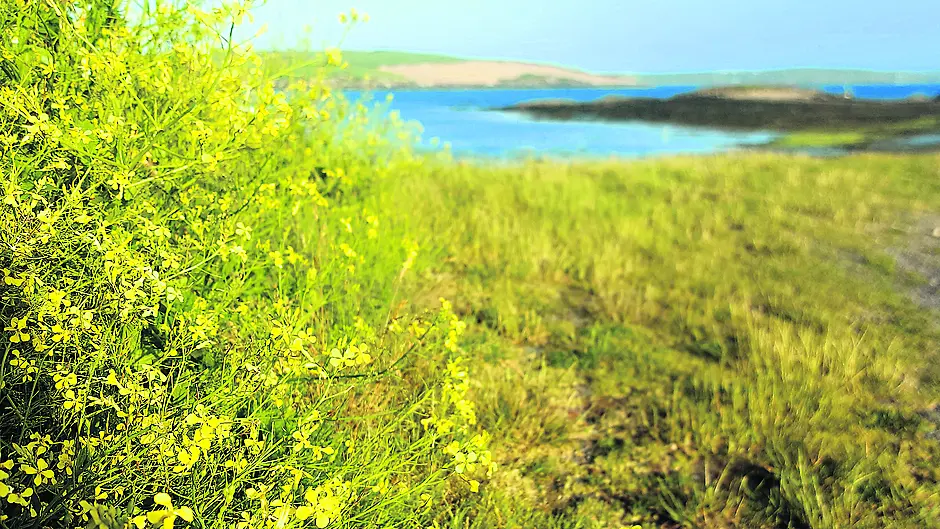LIKE many others, I held off cutting my lawn in May and now have such a rich variety of happy buzzing insects in my garden that I’ve extended this practice indefinitely.
However, there are a few plants that simply take over in this seaside location so I’ve been steadily removing them as they emerge, with the sea radish the most persistent of all. As this is an edible plant, I decided to harvest it to eat (rather than simply curse it) and so I’m inadvertently following the latest trend in becoming a ‘wild forager’.
Wild plants have been used for a variety of purposes in this country for millennia and it’s great to see the renewed interest in their use. However, many (like sea kale) can be threatened by over-harvesting and many more are poisonous so care is needed.
Ancient uses
Our ancestors would once have relied heavily on wild plants, with the information about their myriad uses passed on orally from generation to generation. It’s not firmly established when we turned our backs on this free bounty, but the huge upheavals at the end of the Gaelic era in the 17th century surely disrupted this transfer of knowledge from ‘the old people’.
When the potato arrived in Ireland, it out-competed wild foodstuffs which further added to the decline. Until, of course, the infamous blight arrived in 1845 and people were forced to eat seaweed, charlock, nettles and whatever else they could find during the Great Famine. Subsequently, the consumption of such wild foods became associated with poverty and hardship and the old ways fell into disuse.
Wild plants were utilised in a variety of ways in ancient Ireland. Tree were considered a valuable resource, and so a ‘hierarchy of trees’ was written into Old Irish Law as a result. They provided material for house and boat building; for furniture and farm implements as well as weaponry, basketry, musical instruments and rope making, while their fruit and nuts were consumed as food and in cloth dying.
Our ancestors seemingly regularly ate watercress, sorrel, nettles and wild garlic as well as sloe, wild cherry, raspberry, blackberry, strawberry, rowan crab-apple and elderberry. Sea kale, sea beet and sea radish were undoubtedly used by the coastal dwellers too as well as the truly delicious rock samphire.
Seaweed was another plant held in high esteem as it was used as a soil fertiliser all around our coast and sold inland for the same purpose. The landlord decreed his tenants’ seaweed harvesting rights and this sometimes involved carrying the weed for some distances by road or sea. Kelp burning in kilns was common and a good ‘cash crop’ too in hard times. Both cattle and humans were fed seaweed and I was regularly given carrageen moss in milk by my father in childhood to ‘build me up’. And when we finally installed a bathroom in our home, he enraged my mother by filling the bath with bladder wrack and bathing in it – I can still vividly remember the mess and the row that followed. Dulse was another favourite of his, chewed on the shoreline whilst periwinkle picking.
Lichens were eaten in other countries but there are no records of consumption in Ireland, however, they were widely employed in cloth dying. Mosses had a variety of uses, especially the beautiful, springy and highly-absorbent bog moss. This was the toilet roll of medieval times and there are written accounts of it being picked on the Mizen peninsula to make ad hoc baby nappies too. Bog moss’s many antibacterial and antiseptic properties led to its popularity as a field wound dressing, and there are written accounts of such from the Battle of Clontarf in 1014.
It’s great to see the renewed interest in foraging these wild foods, however, caveats apply and a good field guide is an absolute essential. My garden sea radish has been enjoyed as punchy salad leaves and also steamed and roasted. However, my favourite bit is the seeds which are at their best right now. Sea radish seed pods contain just two or three beads of seeds and they are extremely flavoursome consumed on the hoof but also add spice to salads. Apparently they can also be pickled but none of mine have managed to last long enough for that.










